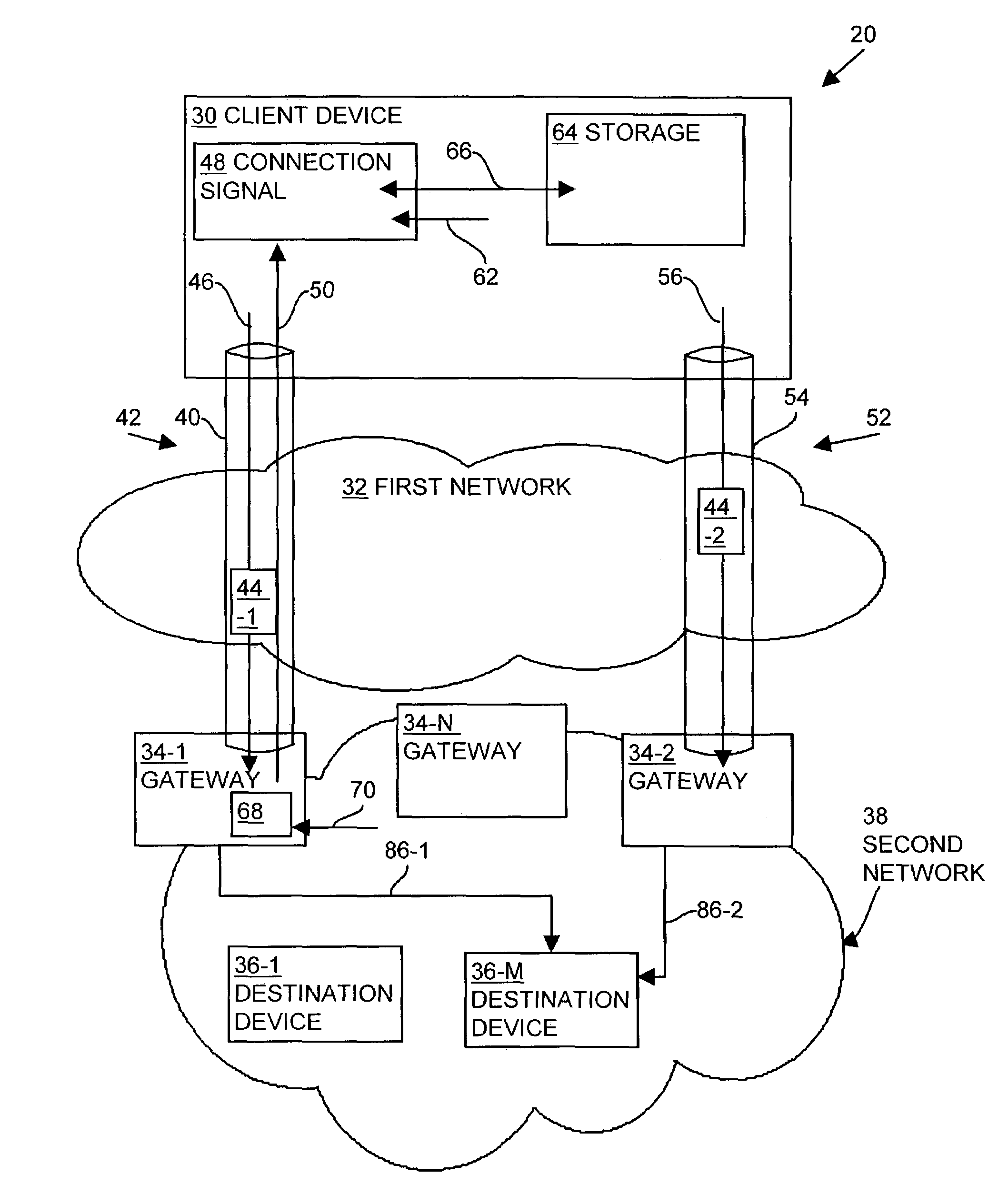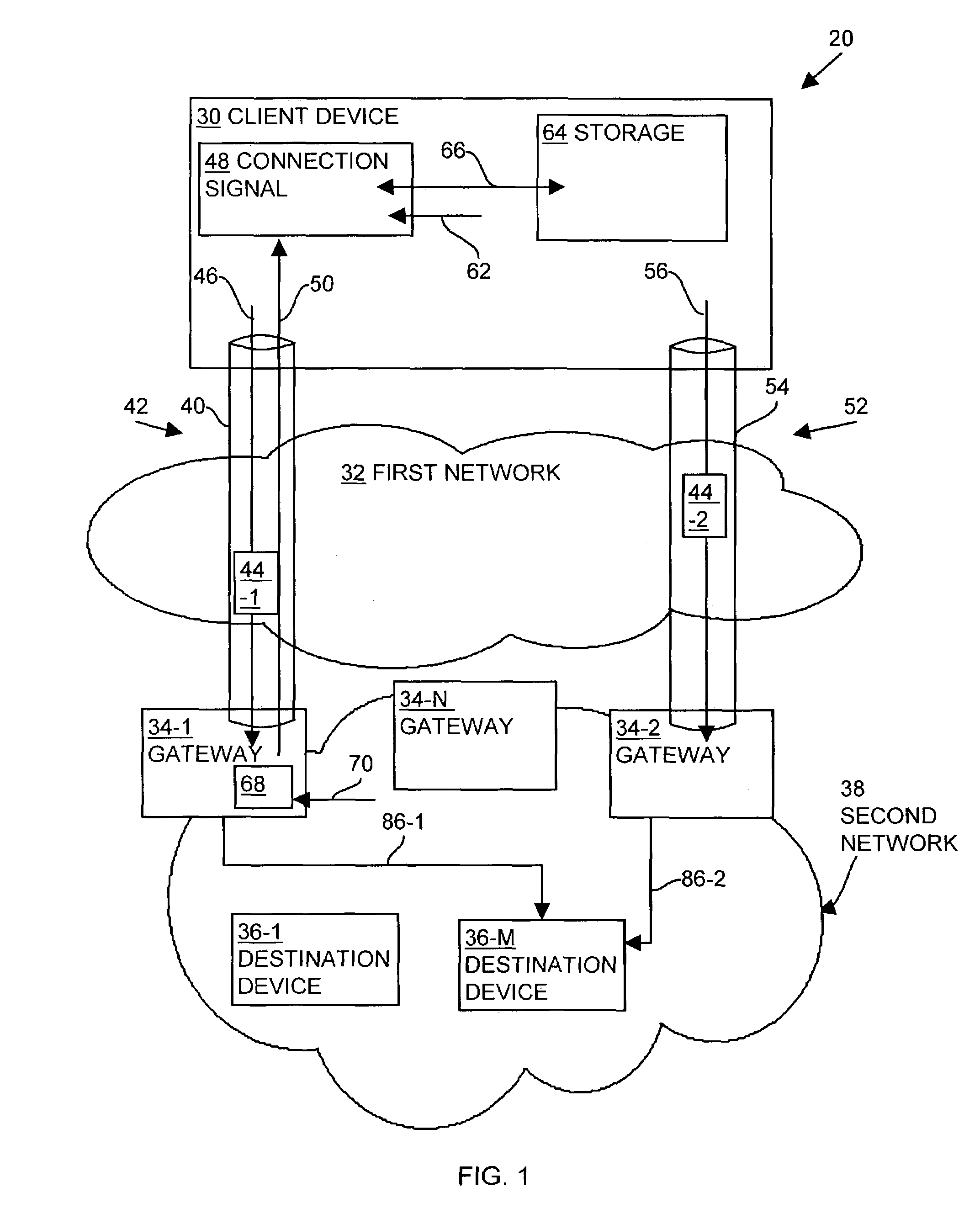Methods and apparatus for establishing a computerized device tunnel connection
a computerized device and tunnel connection technology, applied in the field of methods and apparatus for establishing a computerized device tunnel connection, can solve the problems of increasing the cost of data distribution or transmission to the corporation, increasing the latency of the connection, etc., to maximize the consumed bandwidth, increase the cost of data distribution or transmission, and minimize the bandwidth utilization of the public internet connection
- Summary
- Abstract
- Description
- Claims
- Application Information
AI Technical Summary
Benefits of technology
Problems solved by technology
Method used
Image
Examples
Embodiment Construction
[0027]Embodiments of the present invention provide methods and apparatuses for load balancing tunnels to a private network to provide relatively high data transmission performance while reducing traffic cost within the private network. A client device establishes a first tunnel connection, through a public network, with a first gateway of a private network and establishes, through the tunnel, a data connection with a destination device within the private network. The first gateway monitors or analyzes the geographic locations of the gateways associated with the private network relative to the geographic location of the destination device associated with the data connection. Based upon such monitoring, the first gateway transmits information to the client device relating to establishment of a second tunnel connection with a second gateway of the private network. The client device establishes the second tunnel connection with the second gateway and establishes a data connection with t...
PUM
 Login to View More
Login to View More Abstract
Description
Claims
Application Information
 Login to View More
Login to View More - R&D
- Intellectual Property
- Life Sciences
- Materials
- Tech Scout
- Unparalleled Data Quality
- Higher Quality Content
- 60% Fewer Hallucinations
Browse by: Latest US Patents, China's latest patents, Technical Efficacy Thesaurus, Application Domain, Technology Topic, Popular Technical Reports.
© 2025 PatSnap. All rights reserved.Legal|Privacy policy|Modern Slavery Act Transparency Statement|Sitemap|About US| Contact US: help@patsnap.com



